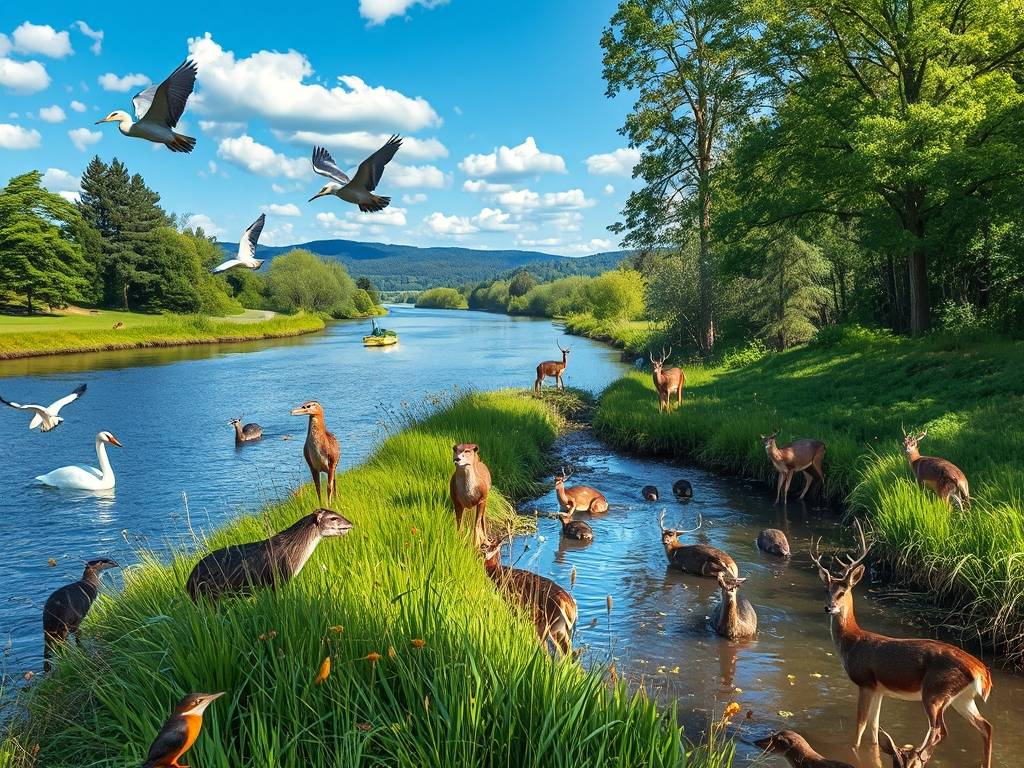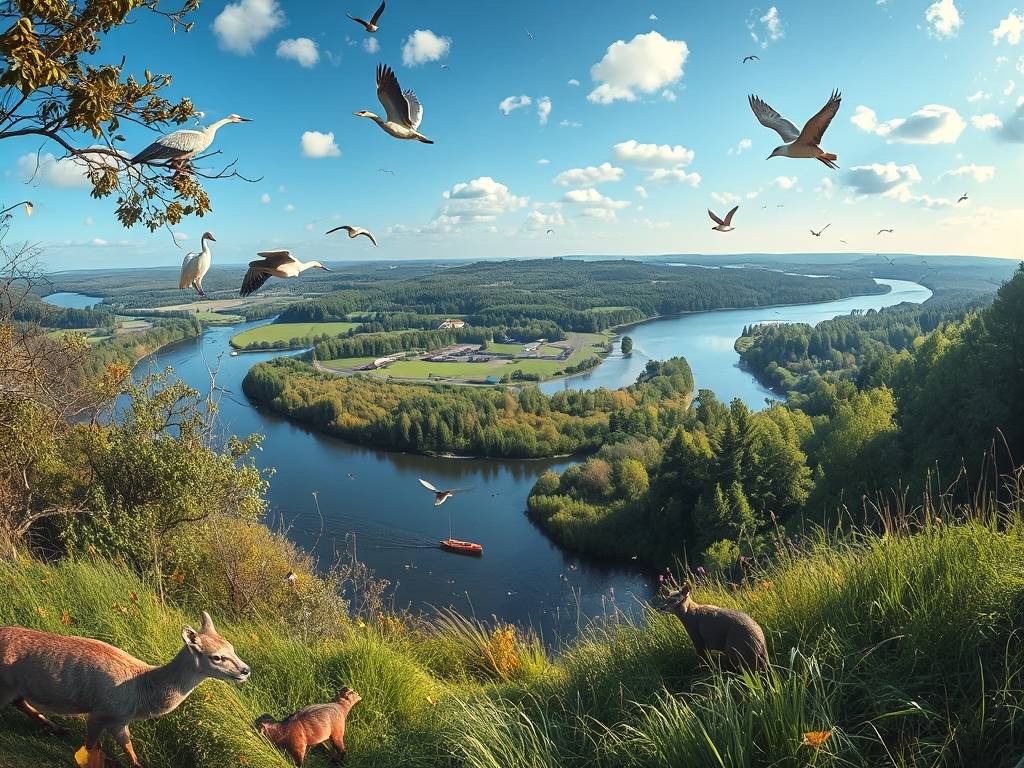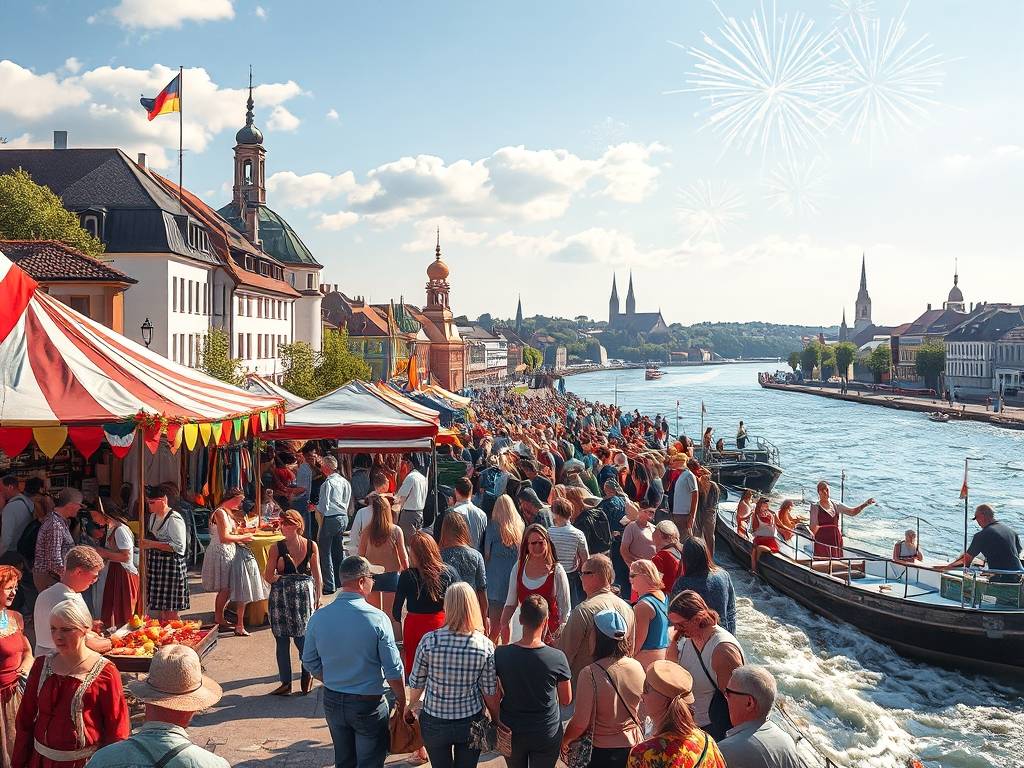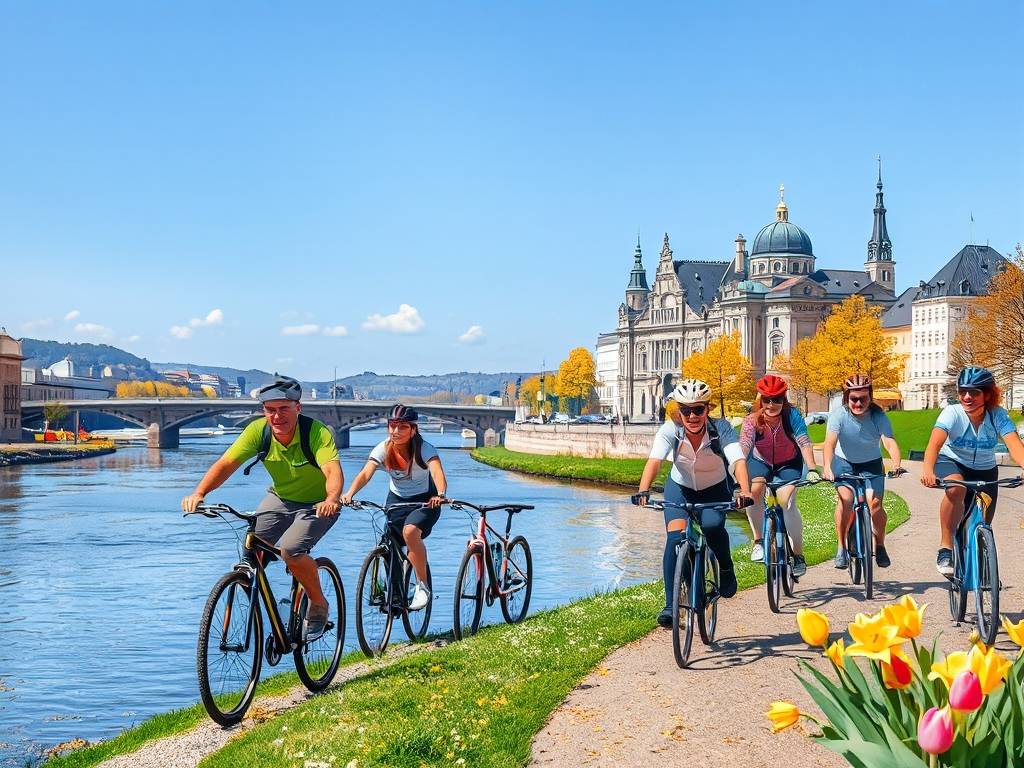Global Travel Information
Elbe River Wildlife Watching: Where to Spot Birds & Animals
The Elbe's Living Tapestry: Your Guide to Wildlife Watching Along the River
The Elbe River is more than just a ribbon of water carving through the heart of Europe; it's a pulsating artery of life. From its source in the Czech Republic's Giant Mountains to its grand meeting with the North Sea in Germany, the Elbe and its sprawling valleys create one of the most significant and accessible wildlife corridors on the continent. For the budding naturalist, the seasoned birdwatcher, or anyone with a love for serene, untamed landscapes, embarking on an Elbe River wildlife adventure is a journey into a living, breathing ecosystem. This guide is your comprehensive companion, designed to show you exactly where to go, what you might see, and how to make your experience both memorable and respectful to the natural world.
The true magic of the Elbe, and what makes it so special for wildlife enthusiasts, lies in its largely natural floodplains. Unlike many heavily regulated European rivers, long stretches of the Elbe are allowed to flood seasonally. This natural rhythm creates a dynamic mosaic of habitats: shallow waters, sandbanks, water meadows, and ancient riparian forests. This diversity is the cornerstone for its incredible biodiversity, offering food, shelter, and breeding grounds for a spectacular array of creatures. The key to a successful trip is understanding this rhythm – the river's seasons dictate which animals are visible and where.

The Avian Spectacle: A Birdwatcher's Paradise
Birdlife is undoubtedly the star attraction of the Elbe. The river is a critical highway for migratory birds, and a stable home for many resident species. Your bird watching along the Elbe River experience will vary dramatically with the seasons, but the spectacle is always present.
-
The Elbe Biosphere Reserve: The Heart of the Action Stretching for over 400 kilometers in Germany, the Elbe Biosphere Reserve is the epicenter for spotting rare bird species in Elbe Valley. This UNESCO-recognized area is a sanctuary where human activity and nature exist in a delicate balance. Within the reserve, several spots are legendary among ornithologists.
-
The Lenzen Water Meadows: Located in the Lower Middle Elbe, this area is a hotspot for white-tailed eagles. These majestic birds, Europe's largest eagle, are a conservation success story here. With patience and a good pair of binoculars, you can often spot them soaring high on thermal currents or perched majestically in a riverside tree. The best Elbe River white-tailed eagle spotting often happens during the colder months when they are more active near the open water.
-
The "Alte Elbe" (Old Elbe) Near Sandau: These former river channels, now oxbow lakes, are tranquil havens for waterfowl. Here, you can observe the elegant, black-and-white smew, the gregarious goldeneye, and large flocks of greylag geese. The quieter backwaters are also perfect for observing Elbe River kingfishers – a flash of electric blue and orange that never fails to delight.
-
The Saxon Elbe Valley (Dresden Area): Don't assume the proximity to the city of Dresden diminishes the wildlife. The slopes and forests here are excellent for finding woodpeckers in Elbe's forests. You might hear the distinctive drumming of the great spotted woodpecker or, if you're very lucky, catch a glimpse of the impressive black woodpecker. Meanwhile, the river itself is home to colonies of common terns, which dive dramatically for fish.
-
-
The North Sea Estuary: A Coastal Wonderland Where the Elbe finally kisses the North Sea, the environment transforms into a vast, windswept landscape of mudflats and salt marshes. This is the Wadden Sea National Park, a World Heritage Site and a critical stopover for millions of birds. This is the ultimate destination for coastal bird watching Elbe estuary.
- Cuxhaven and the "Kugelbake": From the harbors and dikes around Cuxhaven, you can witness an awe-inspiring spectacle. Vast flocks of dunlins, sanderlings, and knots perform breathtaking aerial ballets, while shelducks and oystercatchers probe the mud for food. This is also a prime location for seeing migratory birds at Elbe River mouth, including brent geese and various species of plovers in their thousands during spring and autumn migration.
Beyond the Birds: Encounters with Elbe's Mammals and More
While the birds may steal the show, the Elbe's diverse animal life Elbe floodplains includes a cast of fascinating mammals, amphibians, and even large fish that are equally rewarding to find.
-
The European Beaver: Master Engineer One of the most thrilling Elbe River wildlife encounters is finding evidence of the Eurasian beaver. These nocturnal, shy creatures have made a remarkable comeback. You are unlikely to see the beaver itself during the day, but their signs are everywhere. Look for freshly gnawed tree trunks with distinctive tooth marks, and complex dams and lodges built from branches and mud. Guided evening tours in areas like the Elbe Biosphere Reserve offer the best chance to spot them at work.
-
A Cast of Forest Dwellers The lush forests and meadows flanking the river are home to roe deer and red deer, which can often be seen grazing at the forest edges at dawn or dusk. Wild boar are also common, though they are even more secretive. The real treat for mammal watchers is the chance to see the elusive otter. While incredibly difficult to spot, the Elbe's population of Eurasian otters is one of the most vital in Central Europe. Look for their footprints (tracks with five toes and a webbed impression) in soft mud along the banks.
-
The Underwater World Don't forget to look down into the water itself! The Elbe is one of the few rivers in Germany that is still home to native sturgeon. These prehistoric-looking giants, which can grow over three meters long, are the focus of intensive reintroduction programs. Spotting one is a rare event, but knowing they are there adds to the magic. More commonly, you might see large pike lurking in the quieter side channels.
Planning Your Perfect Elbe Wildlife Adventure
To ensure your trip is successful and sustainable, a little planning goes a long way. Here are some essential tips for Elbe River nature tours.
-
Choosing Your Season:
- Spring (March-May): The air is filled with birdsong as migrants return and nesting begins. A fantastic time for seeing vibrant plumage and courtship displays.
- Summer (June-August): Lush greenery, young animals, and an abundance of insects and flowers. Early mornings and late evenings are best for wildlife viewing to avoid the heat of the day.
- Autumn (September-November): The migration season is in full swing, with vast flocks of geese and ducks arriving. A spectacular and atmospheric time to visit.
- Winter (December-February): The lack of foliage makes it easier to see birds and deer. This is the best time for seeing white-tailed eagles and large congregations of waterfowl.
-
Essential Gear:
- Optics are non-negotiable. A good pair of 8x42 or 10x42 binoculars is your most important tool. A spotting scope on a tripod is invaluable for scanning the estuary mudflats.
- Clothing: Wear muted, earthy colors (greens, browns, greys) to blend into the environment. Dress in layers, as weather by the river can change quickly. Waterproof footwear is a must.
- Field Guide & Apps: A regional bird and mammal guidebook or a dedicated app like Merlin Bird ID will greatly enhance your ability to identify what you see.
-
The Ethical Watcher's Code: The privilege of observing wildlife comes with responsibility. Always maintain a respectful distance. Use your zoom lens; never approach a nest or stress an animal. Stay on marked paths to avoid trampling sensitive vegetation and disturbing ground-nesting birds. Keep noise to a minimum – the quieter you are, the more you will see and hear. This is the cornerstone of responsible wildlife watching Elbe Biosphere.

-
Enhancing Your Experience: Consider joining a guided tour, especially for specific targets like beavers or eagles. Local guides possess invaluable knowledge about animal behavior and current locations, significantly increasing your chances of a great sighting. Many tours are offered by organizations like NABU or the local Biosphere Reserve administration, focusing on family-friendly Elbe wildlife spotting and educational Elbe Biosphere Reserve animal sightings tours.
Whether you're standing on a dike at the windy North Sea, listening to the symphony of thousands of wading birds, or sitting silently in a hide in a flooded forest waiting for an eagle to appear, the Elbe offers a profound connection with the natural world. It's a testament to what can be preserved and restored when we value wild spaces. So pack your binoculars, a sense of wonder, and this guide, and set out to discover the living tapestry of the Elbe River for yourself. Your adventure into one of Europe's most captivating natural landscapes awaits.
相关文章
- Elbe River Water Level Today: Real-Time Updates for Boaters
- Elbe River Cycling Routes: Explore by Bike This Year
- Elbe River Local Festivals: 2025 Events Not to Miss
- Elbe River Accommodation: Best Hotels Near the Water
- Elbe River Fishing Spots: Permits & Top Locations
- Elbe River Castles & Palaces: Historical Sites Along the Banks
- Elbe River Transportation: How to Get Around Easily
- Elbe River Safety Tips: Stay Safe During Your Visit
- Elbe River Winter Travel Guide: What to Do in Cold Months
- Elbe River Summer Activities: Kayaking, Picnics & More
发表评论
评论列表
- 这篇文章还没有收到评论,赶紧来抢沙发吧~


